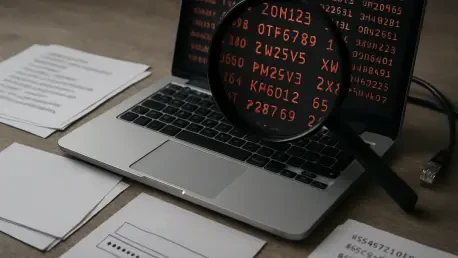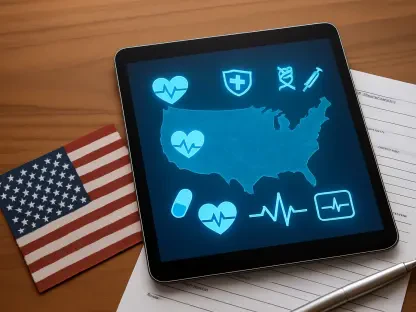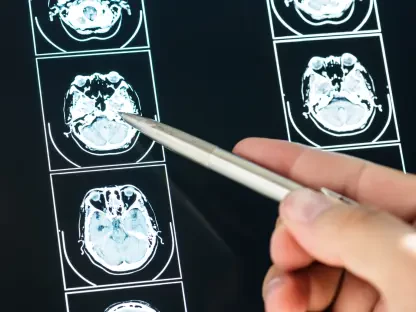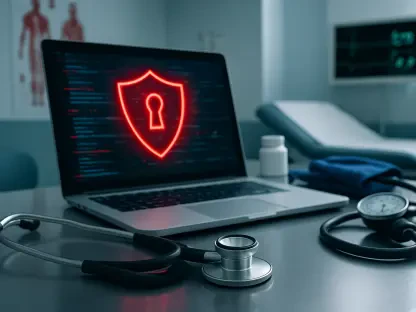Imagine receiving a letter from a hospital informing you that your Social Security number, health records, and financial details have been exposed to an unknown third party due to a cyberattack, a terrifying reality now faced by over 77,000 individuals connected to Sturgis Hospital in Michigan. This alarming scenario unfolded after a series of unauthorized network intrusions were recently detected, compromising sensitive data and raising serious concerns about identity theft and privacy. The hospital has taken steps to address the breach, but questions remain about the safety of personal and medical information in an era where cyberattacks are increasingly common. This incident serves as a stark reminder of the vulnerabilities in healthcare systems, where vast amounts of sensitive data are stored and often targeted by cybercriminals. As the investigation unfolds, affected individuals are left wondering about the extent of the damage and what protective measures can be taken to safeguard their information.
1. Timeline of the Unauthorized Access
The initial detection of unauthorized activity in Sturgis Hospital’s computer network occurred late last year, marking the beginning of a troubling sequence of events. Cybersecurity experts were promptly engaged to investigate and secure the compromised systems. Despite these efforts, a second wave of unauthorized access was discovered several months later, indicating persistent vulnerabilities. According to official disclosures, the first breach likely spanned a short window of several days, while the subsequent incident further complicated the hospital’s response. The total number of affected individuals stands at 77,771, though this figure may rise as additional data is reviewed. Notifications have been sent to those impacted, with the hospital working to verify contact details to ensure everyone is informed. This timeline highlights the challenges in detecting and mitigating cyber threats in real-time, especially in environments handling sensitive information like healthcare facilities. The dual breaches underscore the need for robust, proactive security measures to prevent such incidents from recurring.
Following the initial breach, the hospital’s response was swift but faced hurdles as the second intrusion emerged, suggesting that the initial remediation may not have fully addressed underlying weaknesses. Public disclosures filed with state and federal authorities, including the Department of Health and Human Services, revealed the scale of the incident and prompted further scrutiny. Reports were also submitted to multiple state attorney general offices to comply with legal obligations. The staggered nature of the breaches and the subsequent notifications reflect the complexity of managing a cybersecurity crisis of this magnitude. For those affected, the delay between the incidents and the eventual public disclosure may raise concerns about transparency and the speed of response. This situation also emphasizes how even well-intentioned efforts to secure systems can be undermined by persistent and evolving cyber threats, leaving institutions like hospitals in a reactive rather than preventive stance.
2. Scope of Exposed Information
The breadth of data compromised in the Sturgis Hospital breach is deeply concerning, as it encompasses both personally identifiable information (PII) and protected health information (PHI). PII includes critical details such as names, contact information, Social Security numbers, and financial account data like bank account numbers. Meanwhile, the PHI exposed covers health insurance details, prescriptions, treatment records, and other clinical information. Such a wide range of sensitive data in the wrong hands could lead to severe consequences, including identity theft, financial fraud, and misuse of medical information. The sheer volume of affected individuals—over 77,000—amplifies the potential impact of this breach. For those involved, the exposure of such intimate details creates a heightened risk that extends beyond immediate financial loss to long-term privacy violations. This incident illustrates the high stakes involved when healthcare data is not adequately protected.
Beyond the immediate data types exposed, the implications of this breach reach into various aspects of personal security and trust in healthcare providers. The combination of PII and PHI being accessed means that cybercriminals could potentially exploit this information for targeted scams, such as fraudulent medical billing or phishing attempts tailored to individuals’ health conditions. Additionally, the psychological toll on affected individuals cannot be overlooked, as many may feel vulnerable knowing their most private information has been compromised. The hospital has acknowledged the severity of the breach by offering support services, but the scale of the data exposed raises questions about whether current cybersecurity protocols in healthcare are sufficient. This breach serves as a critical case study for other institutions to evaluate their own data protection strategies, particularly when handling such a diverse and sensitive array of personal information under strict regulatory standards.
3. Hospital’s Response and Support Measures
In the aftermath of the breaches, Sturgis Hospital took decisive action to secure its systems and prevent further unauthorized access. Third-party cybersecurity specialists were brought in to investigate both incidents, identify vulnerabilities, and implement enhanced security protocols. Law enforcement was also notified to assist with the process, ensuring a comprehensive approach to addressing the breach. Importantly, the hospital prioritized notifying affected individuals without delay, providing detailed information on the incident and the steps being taken. To mitigate potential harm, complimentary identity theft protection services through a reputable provider were offered to those impacted. Instructions on enrollment and deadlines for these services were included in notification letters, emphasizing the urgency of taking protective action. This response demonstrates a commitment to transparency and support, though it also highlights the reactive nature of handling such crises.
Additionally, the hospital provided actionable guidance for affected individuals to monitor their financial accounts and credit reports for signs of fraud or identity theft. Recommendations included placing fraud alerts or security freezes on credit files and reporting any suspicious activity to law enforcement and federal authorities. These measures aim to empower individuals to take control of their personal security in the wake of the breach. While the hospital’s efforts to offer resources and support are commendable, the incident raises broader questions about preventative strategies in the healthcare sector. The engagement of external experts and law enforcement reflects a multi-layered response, yet the recurrence of unauthorized access suggests that more robust, preemptive safeguards are needed. For those affected, the provided resources serve as a starting point, but ongoing vigilance will be crucial to mitigate the long-term risks associated with such a significant data exposure.
4. Moving Forward: Protecting Personal Data
Reflecting on the Sturgis Hospital breach, the incident underscores the critical need for heightened cybersecurity in healthcare settings. Hospitals and similar institutions must prioritize advanced security measures long before such breaches occur, as the cost of failure is immense for both individuals and organizations. The dual incidents at Sturgis Hospital prompted a reevaluation of existing protocols, with lessons learned about the importance of continuous monitoring and rapid response mechanisms. Affected individuals are advised to remain proactive by regularly reviewing their financial and medical accounts for any irregularities. Taking advantage of identity protection services offered by the hospital proves to be a vital step in safeguarding personal information.
Looking ahead, the focus shifts to systemic improvements and individual empowerment. Healthcare providers need to invest in cutting-edge cybersecurity technologies and staff training to anticipate and thwart potential threats. For individuals, staying informed about data protection practices becomes essential, such as using strong passwords and enabling two-factor authentication where possible. Reporting suspicious activities promptly to authorities helps in curbing further damage. This breach serves as a catalyst for broader discussions on how to balance technological advancements with the imperative to protect sensitive data, ensuring that future incidents can be minimized through collective vigilance and innovation.









